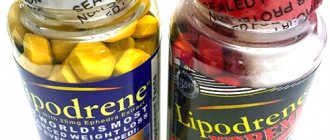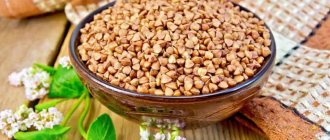© Maksym Yemelyanov — stock.adobe.com
Share:
Natural, doping-free sport is a whole science that requires maximum effort from gym visitors. Nutrition, including sports nutrition, plays a significant role in achieving results. And a striking example of the need to use dietary supplements in crossfit, bodybuilding and other sports are amino acid phosphates.
What is creatine, why is it so popular, and is it really that effective in sports? You will receive detailed answers to these and other questions in the article.
Chemical structure
Creatine is a non-essential amino acid. If necessary, the body is able to independently synthesize creatine phosphate and transport it to muscle tissue, containing:
- arginine
- glycine.
- methionine
Creatine phosphates are found in small quantities in meat foods.
Interesting fact: the amount of creatine in the muscles of poultry and wild birds differs by more than 20%. The same applies to aquarium fish, which contain 40% less creatine than those caught in ocean waters. The answer to this question lies in the training of organisms. As you know, if a calf/chicken or other domestic animal moves a lot, its muscles become stiffer, which is why sedentary animals are specially raised on farms for meat lovers. Mobility stimulates anabolism in any animal - as a result, more creatine is found in trained muscles
Why has creatine become a revolution in the world of sports nutrition? It's simple. The body can synthesize very small amounts of the substance (maximum 1 g), while at the same time its concentration is negligible compared to other amino acids in meat. During heat treatment, it breaks down into arginine, glycine and methionine, which deprives the value of fried and heavily cooked foods.
© Zerbor — stock.adobe.com
How does creatine work?
Our body is a huge accumulation of various vital processes, among them: muscle activity, brain activity, recovery processes, food digestion, the cardiovascular system and many others.
Each of them, oddly enough, requires energy. For many, the main fuel is ATP - adenosine triphosphate. This substance can be classified as a universal source of energy; it is used by both the brain and muscles. But we are interested in muscle connections, we don’t care about the brain yet. When performing arm bending, leg extension and other physical actions, our body turns to ATP storage. But, unfortunately, its supply is small. Its energy is spent in a few seconds, especially if we take maximum weights. Despite this, ATP reserves do not disappear completely. The name speaks for itself; the substance consists of three phosphate groups. During the first seconds of ATP use, only one phosphate is split off from it. Further, the substance has the structure of ADP, adenosine diphosphate, that is, we are left with only 2 phosphates. This can be represented by the following equation: ADP + phosphate = ATP + breakdown.
After the transition of ATP to ADP, the “stash” of creatine comes into play. Roughly speaking, creatine can be called a phosphate base. But when creatine is contained in phosphates, the name of the compound will sound like this: creatine phosphate or CrP. Under the influence of third-party enzymes, KrP is destroyed and thus donates its phosphate to the ADP compound. As a result: ADP regains the structure of ATP and is instantly converted into energy. Using the formula as an example: ADP + KrP = creatine + ATP. Our body quickly synthesizes phosphate and adds it to its creatine supply.
Unfortunately, this process does not last long due to the limited supply of CrF and creatine. In physical parameters, this is felt very noticeably, and performing 10 repetitions with a working weight becomes more difficult and muscle failure will occur around the 7th repetition. This is due to low creatine levels. The breakdown of glycogen (anaerobic glycolysis) does not have time to reach maximum values, and creatine reserves are on the verge. The result is muscle failure.
Taking creatine supplements allows your body to increase its supply of these compounds. Muscles adapt and move to work with different creatine platforms. In any case, the combination of phosphates does not stop. This way, you increase your supply of CrP and creatine, which allows you to train more effectively.
A sufficient supply of creatine allows us to use heavy weights without worrying about the activation of anaerobic glycolysis. This leads to the release of the full training potential and the accumulation of a large number of microtraumas, which will be subject to supercompensation during the recovery period. And that is why creatine is called sports nutrition for gaining muscle mass. It will speed up your progress and help you reach your desired goal.
Reason why it must be taken separately
From all of the above, there follows the main reason why creatine (in any of its chemical forms) is more profitable to take as a sports supplement. Everything is very simple. With negligible presence in food and minimal synthesis from other amino acids, the average person's need for creatine is about 6-8 grams per day.
As for athletes, their need reaches a phenomenal 30 g per day. And this is not counting the fact that muscles are capable of storing creatine phosphate in amounts of up to 450 g. To organize such a supply of creatine to the body, it is necessary to consume tens of kilograms of meat per day, which will lead to rapid failure of the gastrointestinal tract. At the same time, creatine in the form of supplements has almost no interaction with the digestive system and penetrates directly into muscle tissue.
Content
- 1 Creatine: a scientific review
- 2 Structure, physicochemical properties and metabolism of creatine 2.1 Metabolism of creatine in the body
- 2.2 Pharmacodynamics of exogenous creatine
- 2.3 Pharmacokinetics of exogenous creatine
- 4.1 Formulas and compositions
- 5.1 Combined use of CM and sodium bicarbonate
Effects of creatine on the body
The main effect of creatine when it enters the body is the accumulation of the compound in the muscles.
Other positive effects of taking amino acids:
- Increasing the transport properties of cholesterol in the body. This concerns increasing the period of removal of bad cholesterol and transportation of good cholesterol.
- Creation of lactic acid buffer. Lactic acid is the main cause of micro-tears in muscles, therefore, it acts as a direct precursor to the principle of super-recovery of the body.
- Increased oxygen transport to type 2 muscle groups (with white fibers).
- Retention and binding of fluid in the body.
These are just the general effects of creatine that affect an untrained person. Read more about the benefits and harms of creatine here.
Creatine in sports
There is active debate regarding the effectiveness of creatine in sports disciplines. On the one hand, it has received wide support in the bodybuilding community, as it allows you to significantly bloat your muscles. On the other hand, people who need to stay in certain weight categories become ardent opponents of creatine.
However, no one disputes that using creatine leads to:
- pumping effect on earlier repetitions;
- significant increase in muscle mass;
- increasing the efficiency of anabolism when acting on selective androgen receptors;
- increasing endurance by increasing the oxygen content in white muscle fibers;
- accumulation of glycogen reserves in water-bound muscle tissues;
- temporary increase in strength indicators, which allows you to break through the strength plateau and build more muscle mass;
- beneficial effects on the strength of contractions of the heart muscle.
Let's take a closer look at what creatine is needed for.
Performance boost
This is not a direct, but an indirect consequence of taking creatine. The supplement increases strength and endurance during loading and maintenance by almost 35%.
Here's how it happens. Saturating muscles with creatine leads to an increase in fluid in them. In turn, this leads to greater pumping and an increase in the body's need for oxygen. After the second workout, the body begins to adapt to this factor and forces the blood vessels to more powerfully supply the muscles with oxygen. Namely, it depends on oxygen reserves how much glycogen in anaerobic form can be released by the body.
Consequently, due to pumping, an increase in the amount of oxygen and glycogen is achieved.
In turn, both of these factors directly affect strength endurance. The athlete can lift the same weights but with more repetitions. And this, in turn, increases training: an athlete can work in high-volume training not with 50% of his maximum weight, but with 75-80%. In turn, increasing endurance with proper training and the use of creatine leads to an increase in strength indicators - working weights become larger, the number of repetitions increases.
Conclusion: indirect filling of muscles with blood when consuming creatine phosphate triggers a whole chain of events that ensure the growth of all indicators of the athlete.
Pouring water
Another important feature of creatine is water infusion. Is it good or bad? For athletes in the off-season, this is a serious advantage.
Water in muscles protects and lubricates joints and ligaments. In turn, this reduces the likelihood of injury.
On the other hand, such flooding has its side effects. In particular, due to the abundance of water and the lack of salts (which bind water), an athlete may experience cramps during heavy lifts. Therefore, when loading with creatine, it is better to use insurance in case of unforeseen circumstances. Increasing water in the body is generally a useful thing, except for the increasing load on the kidneys at the time of initial loading.
Muscle growth
The triggered chain of events associated with an increase in the number of blood bodies in muscle fibers indirectly leads to an increase in muscle mass. What is especially noteworthy is that the synthesis of new protein fibers also increases and, as a result, “dry” meat increases. How does this happen?
- The athlete overcomes a strength plateau - the muscles receive new stress, stimulating them to further growth.
- Additional glycogen stores are located exclusively in the cells, which leads to the fact that excess glycogen (affecting endurance) is excreted along with water.
- Improved oxygen supply to muscles leads to acceleration of anabolic metabolic issues.
- At high loads, creatine bound in muscles breaks down back into arginine and other amino acids, which are part of muscle tissue.
Essentially, at a certain point, muscles begin to be built directly from creatine (with a sufficient amount of auxiliary amino acids).
Creatine is used exclusively for gaining weight. Strength indicators are secondary for athletes who consume this supplement.
© chettythomas — stock.adobe.com
Rollback effects
Beginner athletes do not like creatine because of the rebound effect. However, it cannot be taken year-round. All this is due to the fact that with prolonged loading and maintaining the level of acid in the blood, metabolism tends to remove excess creatine and does not accept new portions. After the second month of continuous use of monohydrate, its usefulness is reduced to zero. Therefore, it is recommended to take a break of at least 3 months between loads for the body to adapt. The period of removal of creatine from the body is about 7-10 days.
During this time, the athlete observes:
- Sharp weight loss (due to a decrease in the amount of water in the body).
- Increased fatigue associated with faster accumulation of lactic acid in the muscles.
- Loss of stamina.
- No pumping when performing up to 20 repetitions.
It is important to understand that even when comparing the performance of athletes before and after a creatine course, a significant increase in the percentage of lean muscle mass and overall strength can be noted.
And the most unpleasant thing for most athletes practicing creatine: when removing it from the body, it is necessary to limit the load. Otherwise, you can easily overtrain the body, and then all the benefits obtained from taking the supplement are offset by a delay in further muscle growth.
Creatine and bones
Creatine also has a positive effect on bone density and strength due to the improvement of the transport system. However, the effect is only achievable if the athlete takes enough calcium and vitamin D3 during the creatine loading course. In this case, absorbed calcium enters the blood faster and is redistributed by the body in order to strengthen bones in response to increased loads. The effect lasts for a long time even after you stop taking creatine.
What does creatine do?
- Pumping up strength indicators.
- Improved strength endurance.
- An additional opportunity to use muscle fibers more efficiently.
- A small accumulation of water in the muscles gives them more volume.
Each of these effects contributes to the development of strength and muscle mass. Experienced athletes know that muscle growth depends on the duration and type of exercise. You can add working weight here. Creatine is ready to help in each of these parameters. As with any sports nutrition, a lot of unsubstantiated claims about its harm are attributed to creatine.
Creatine and cutting
Creatine is extremely rarely taken while cutting. Experienced athletes recommend starting cutting during the last period of creatine intake. What is this connected with?
- During drying, the nutritional balance changes dramatically. Carbohydrate rotation and a low-carb diet are designed to deplete glycogen stores. The additional glycogen that comes with phosphate molecules significantly slows down this process, making the diet less effective.
- Creatine with a lack of salts and minerals (which are washed out during drying) can lead to frequent cramps. For this reason, training complexes can result in injury.
- Water retention interferes with the work of diuretics, which are taken in the last days before competitions to obtain maximum relief.
- Due to the additional water, it is impossible to assess the level of subcutaneous fat during the intermediate stages of cutting, which can lead to errors in training or nutrition. As a result, muscles will be burned instead of fat.
© mrbigphoto — stock.adobe.com
Composition and properties of creatine
This natural protein consists of several components. In tandem, they create a product that helps you quickly build muscle mass and increase your physical abilities.
So, creatine contains arginine, glycine and methionine. Individually, they have very useful properties. But together these three substances do incredible things. In particular, if you want to gain muscle mass. Not all preparations based on it have this composition and properties of creatine. Some manufacturers produce creatine with the addition of many vitamins and microelements.
For opponents of sports nutrition
The main reason for the popularity and effectiveness of creatine is due to two things:
- Its low content in food products.
- Low bioavailability in food.
However, for those who still prefer to receive all the necessary amino acids and substances without sports nutrition, we have provided a table of products containing creatine phosphate.
| Amount of creatine monohydrate in food (grams per kilogram of pure product) | ||
| Product | Creatine (g/kg) | Percentage of daily dose for an athlete |
| Herring | 8 | 26% |
| Pork | 5 | 16.5% |
| Beef | 4,5 | 15% |
| Salmon | 4,5 | 15% |
| Milk | 0,1 | 0.30% |
| Vegetables fruits | <0.01 | 0.01% |
| Nuts | <0.01 | 0.01% |
As you can see from the table, in order to get an acceptable dose of creatine phosphate for training, you need to eat at least 4 kilograms of herring. During heat treatment (i.e. cooking), phosphates, which are extremely unstable to temperature, disintegrate. As a result, fried or boiled herring contains 4 times less nutrients. In other words, you will need tens of kilograms of herring per day. And consuming such an amount of food per day will easily “ruin” the athlete’s digestive system.
© itakdaleev — stock.adobe.com
How to choose creatine
Our Sportfood online store has a large selection of cretin from different manufacturers. Supplements also come in different forms, which can make choosing difficult. Below is a short list of creatine types:
- Creatine monohydrate is the most researched form of the supplement and is highly effective. Our online store also offers micronized creatine monohydrate. Its effectiveness is also high; in addition, the powder has a fine fraction and is better mixed in the liquid.
- Creapure Creatine is a patented form of creatine monohydrate, highly purified.
- Creatine malate is a combination of creatine and malic acid. This acid is one of the intermediate products of the Krebs cycle, due to which, taking this form of creatine, you can further increase energy production.
- Anhydrous creatine - unlike monohydrate, contains less water, which means more active ingredient. Due to this, the price of the additive also increases.
- Creatine hydrochloride is a fast-absorbing form that also mixes well in liquid.
If you don’t know which creatine to choose, contact the consultants in our online store. They will answer your questions and help you choose sports nutrition based on your needs and sports goals.
Article reviewed and recommended by Mikhail Gamanyuk
Founder of the Sport Nutrition Academy school.
Side effects from taking creatine
Creatine phosphate came into sports disciplines relatively recently. Only in 1996 did athletes begin to actively load up on the first samples of sports nutrition. For this reason, doctors are concerned about the risk of unknown side effects due to long-term use (more than 30 years).
In the short term, creatine is unlikely to have the following side effects:
- Increased load on the kidneys. NOT recommended for people suffering from any type of kidney failure.
- Vitamin deficiency and mineral deficiency are associated with the fact that with an increase in weight and water, minerals and vitamins are concentrated in the bound fluid. You will need to take additional multivitamins.
- Sudden cramps due to insufficient water intake.
- Discomfort in the gastrointestinal tract during the loading period associated with tissue dehydration with insufficient fluid intake.
But the most important side effect comes from the benefits of creatine. It is not recommended to use creatine in loading in the presence of heart failure. At the time of taking creatine, the force of contraction of the heart muscle increases. On the one hand, it helps fight arrhythmia and other problems, and reduces the risk of heart attack. However, when leaving the drug, the opposite trend is observed. Due to the buffering of lactic acid, the heart, under severe loads, significantly exceeds its standard pulse, which can lead to pain and even microtrauma to the heart muscle.
Note: a technique with smooth loading or no loading is quite acceptable. Since the amount of creatine in the blood decreases gradually, the heart muscle has time to adapt to new conditions.
© zhekkka — stock.adobe.com
Creatine: in sports nutrition stores
Creatine is common among consumers, so it can be purchased at pharmacies or sports nutrition stores. True, buying a quality supplement is not easy. Due to the abundance of goods, there is a high probability of buying low-quality goods at a high cost. Often, online stores offer counterfeits from well-known companies, and even the storage conditions may not be observed. The buyer will give a lot of money, but will not get the desired result.
The best option is to buy creatine from online pharmacies with a high reputation. The link to such a site is below. This is especially convenient for the population of Moscow, St. Petersburg, Rostov-on-Don and other large cities, because there is simply no time to go to all sales points. Here a reasonable price is combined with premium quality.
How to take it correctly
Creatine phosphate can be used in two main variations - with and without loading.
In the first case, faster saturation is achieved, but the consumption of the additive increases. In the second option, the risk of side effects is reduced, but the peak occurs only in the third or fourth week of taking the drug.
In the case of consumption with loading, take as follows:
- 10 g of creatine immediately after breakfast along with fast carbohydrates (juice/sweet water).
- 7 g of creatine 2 hours before training, along with the transport system.
- 13 g after evening meal.
After reaching the peak, it is enough to drink creatine once a day, 5-7 g, to maintain its level in the blood. In the case of non-loading use, 8 g of creatine is consumed once a day (in the morning with juice) throughout the entire course of use. The maximum course of taking creatine phosphate is 56 days (8 training weeks). After this, the dosage of creatine is reduced to 1-2 g per day, and after 2-3 days, its use is completely abandoned. Creatine is eliminated 21-28 days after the last dose.
Note: exotic types of creatine have their own scheme of use, which the manufacturer must write about on the packaging. Follow the diagram on the packaging if available.
Structure, physicochemical properties and metabolism of creatine[edit | edit code]
Structure, physicochemical properties and metabolism of creatine
Creatine is a non-protein nitrogen-containing compound.
Metabolism of creatine in the body[edit | edit code]
Creatine is synthesized in the liver and pancreas from the amino acids arginine, glycine and methionine[6][7]. Approximately 95% of the body's total creatine is stored in skeletal muscle, of which 2/3 is phosphocreatine (PCr), the rest is free creatine[8]. In addition, small amounts of creatine are found in the brain and testicles. This total pool of creatine (PCr + free creatine) in skeletal muscle averages 120 grams in a 70 kg subject. However, the average person in certain conditions is able to store 160 grams of creatine[9]. About 1–2% of the total amount of creatine in the body is destroyed per day (1–2 grams per day)[6]. Creatine is then excreted in the urine[6]. Creatine reserves are replenished due to exogenous intake from food and endogenous synthesis[10]. Food sources of creatine include meat and fish. However, to obtain 1 gram of creatine, a very large amount of these products is required. Therefore, creatine monohydrate supplements provide an inexpensive and effective alternative (or supplement) to these foods without excess intake and the need to digest large amounts of fat and protein.
Pharmacodynamics of exogenous creatine[edit | edit code]
According to modern concepts, creatine belongs, on the one hand, to the group of myostatin inhibitors, on the other, to protectors of mitochondrial function. Myostatin is an extracellular cytokine most abundant in skeletal muscle and plays a critical role in the negative regulation of muscle mass[11]. Suppresses the growth and differentiation of skeletal muscle cells.
From a biochemical point of view, the energy supply for the rephosphorylation of ADP to ATP during and after physical exercise significantly depends on the reserves of phosphocreatine (PCr) in the muscles [12]. During physical training, PCr stores decrease and energy availability decreases due to the inability to resynthesize ATP at the level required to maintain muscle metabolism under high load conditions. Accordingly, the ability to maintain maximum effort is reduced. The bioavailability of PCr in muscle can have a significant impact on the amount of energy generated during short periods of high-intensity effort. Moreover, it is hypothesized that increasing muscle creatine content through creatine supplementation may increase PCr availability and accelerate the rate of ATP resynthesis during and after high-intensity short-term exercise [13][14][12].
Pharmacokinetics of exogenous creatine[edit | edit code]
Fig.1.
Concentration/time profile of creatine in the blood after administration of 5 g creatine monohydrate to healthy volunteers. Dark circles indicate concentrations after a single dose. Open circles indicate steady-state concentrations when 5 g of creatine monohydrate was administered four times a day for 6 days. According to A.M. Persky et al., (2003c). A study of oral single administration of creatine monohydrate at a dose of 5 g and repeated (4 times a day for 6 days) [15] revealed the following dynamics (Fig. 1).
In their review, W. McCall and A. M. Persky [16] summarize a series of studies on the pharmacokinetics of creatine after a single dose. Thus, depending on the dose, the following parameters were registered: dose 2-2.5 g – Cmax 180-400 µmol/l, Tmax 0.5-1 hour; 5 g - Cmax 620-1300 µmol/l, Tmax 0.75-1.6 hour; 10 g – Cmax 1000 µmol/l, Tmax 2.25 hour; 15 g – Cmax 2100 µmol/l, Tmax 3 hours; 20 g – Cmax 2200 µmol/l, Tmax 3-4 hours. Thus, exceeding the dose of 15 g/day is not advisable.
After oral administration of creatine and absorption in the intestine, its transport into the cells of organs and tissues (mainly into muscles) is carried out by one exclusive transporter - CreaT1, despite the presence of an active form and another transporter - Crea T2 (localized in the testes) [17]. The supply of creatine, as well as its extra- and intracellular levels, is regulated by the processes of phosphorylation and glucosylation. The Crea T1 transporter is highly sensitive and is activated when intracellular creatine content decreases. Inside cells, there is a mitochondrial isoform of Crea T1, which transports creatine into the mitochondria. Patients with myopathy have reduced levels of both creatine and phosphocreatine and Crea T1, with the latter having the most important role in the pathogenesis of myopathies[18].
Given the importance of maintaining neuromuscular and cognitive functions during intense training, studies of the pharmacokinetics of creatine in brain tissue are essential. It was found that when creatine was administered enterally (8 g/day for 16 weeks), creatine levels in the brain increased by 7.5-13%, depending on the specific brain region[19]. A second study found an approximately 8% increase in brain creatine after 6 months of 10 g/day supplementation[20]. However, a third study found no increase in brain creatine levels with a different oral regimen: 20 g/day for the first 5 days followed by 6 g/day for 8–10 weeks[21]. Consequently, to maintain neurogenic processes during intense training, increasing the daily dose of creatine to 20 g is not advisable.
Top phosphate additives
Creatine is produced by almost all well-known manufacturers:
- Optimum nutrition.
- Ultra nutrition.
- Biotech USA, etc.
Kinds
The quality of the additive from all manufacturers is approximately at the same level. Therefore, it is better to consider creatine supplements by type:
- Creatine monohydrate. The most popular type of sports supplement. The main advantages are a high degree of purification, minimization of side effects and the ability to load with creatine faster compared to other types (you can consume up to 50 g daily, reducing the loading phase by 3-4 days).
- Creatine Phosphate. The cheapest and most effective creatine. Due to the low degree of purification, it has lower bioavailability, which is why phosphate must be taken 15-20% higher than monohydrate. But even in terms of conversion, it remains a cheaper alternative for quickly gaining muscle mass.
- Creatine with transport system. This is a system for the lazy from Weider and Optimum Nutrition. The main feature is the presence of hydrolyzed grape juice, which saves the athlete from consuming sweet tea or separate water. Makes it easier to use the drug when it is impossible to get fast carbohydrates.
- Creatine hydrochloride. Produced by Biotech. Allows you to stay in the loading phase longer and not experience problems with water retention. The actual benefits over other types of creatine have not yet been proven.
Interesting fact: creatine monohydrate is often added to the composition of the gainer. So, when talking about the effectiveness of a gainer, manufacturers often mention the number of kilograms gained while taking the dietary supplement. However, creatine bloats the muscles and floods the body with water, which prevents the actual growth of muscle and glycogen fibers from being assessed. And when you stop taking the gainer, the water goes away. This effect is similar to the effect of a course of creatine. This is why advertising campaigns for gainers often hide the presence of creatine, despite the absence of potential harm to the body. (here are details about how to take mass gainer).
Will creatine harm your health?
This is the first question that arises among people who want to “build” a beautiful body. Everyone is afraid, everyone is worried and is looking for an answer to this question. However, you need to independently research the pros and cons of taking the drug, the properties and composition of creatine.
Today there is no single scientific study on the dangers of creatine for human health. There is an opinion that it has a negative effect on the kidneys or liver function. However, the professors proved the opposite. Therefore, taking medications based on this substance can in no way harm your health. Except in cases where the recommended dose is exceeded. It is for this reason that the instructions always indicate how much creatine a particular person needs to take.











